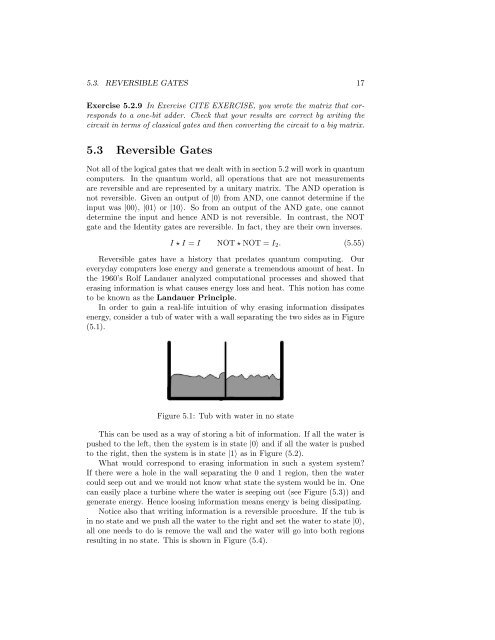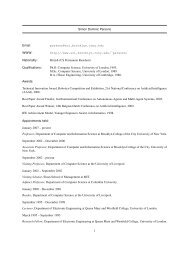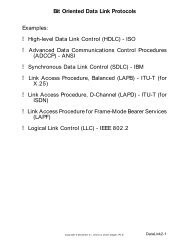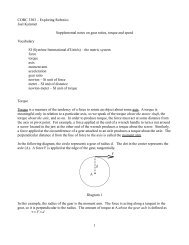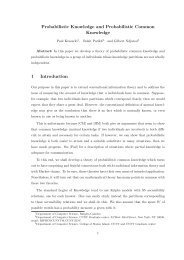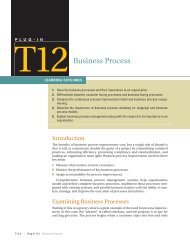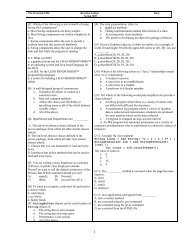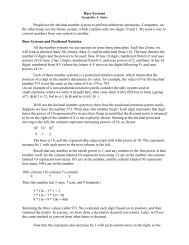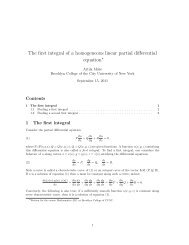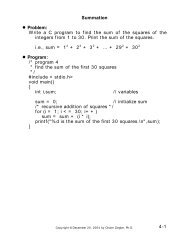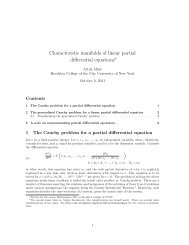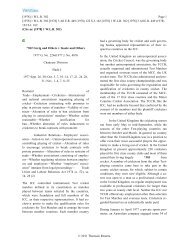Chapter 5: Architecture - Computer and Information Science - CUNY
Chapter 5: Architecture - Computer and Information Science - CUNY
Chapter 5: Architecture - Computer and Information Science - CUNY
You also want an ePaper? Increase the reach of your titles
YUMPU automatically turns print PDFs into web optimized ePapers that Google loves.
5.3. REVERSIBLE GATES 17<br />
Exercise 5.2.9 In Exercise CITE EXERCISE, you wrote the matrix that corresponds<br />
to a one-bit adder. Check that your results are correct by writing the<br />
circuit in terms of classical gates <strong>and</strong> then converting the circuit to a big matrix.<br />
5.3 Reversible Gates<br />
Not all of the logical gates that we dealt with in section 5.2 will work in quantum<br />
computers. In the quantum world, all operations that are not measurements<br />
are reversible <strong>and</strong> are represented by a unitary matrix. The AND operation is<br />
not reversible. Given an output of |0〉 from AND, one cannot determine if the<br />
input was |00〉, |01〉 or |10〉. So from an output of the AND gate, one cannot<br />
determine the input <strong>and</strong> hence AND is not reversible. In contrast, the NOT<br />
gate <strong>and</strong> the Identity gates are reversible. In fact, they are their own inverses.<br />
I ⋆ I = I NOT ⋆ NOT = I 2 . (5.55)<br />
Reversible gates have a history that predates quantum computing. Our<br />
everyday computers lose energy <strong>and</strong> generate a tremendous amount of heat. In<br />
the 1960’s Rolf L<strong>and</strong>auer analyzed computational processes <strong>and</strong> showed that<br />
erasing information is what causes energy loss <strong>and</strong> heat. This notion has come<br />
to be known as the L<strong>and</strong>auer Principle.<br />
In order to gain a real-life intuition of why erasing information dissipates<br />
energy, consider a tub of water with a wall separating the two sides as in Figure<br />
(5.1).<br />
Figure 5.1: Tub with water in no state<br />
This can be used as a way of storing a bit of information. If all the water is<br />
pushed to the left, then the system is in state |0〉 <strong>and</strong> if all the water is pushed<br />
to the right, then the system is in state |1〉 as in Figure (5.2).<br />
What would correspond to erasing information in such a system system?<br />
If there were a hole in the wall separating the 0 <strong>and</strong> 1 region, then the water<br />
could seep out <strong>and</strong> we would not know what state the system would be in. One<br />
can easily place a turbine where the water is seeping out (see Figure (5.3)) <strong>and</strong><br />
generate energy. Hence loosing information means energy is being dissipating.<br />
Notice also that writing information is a reversible procedure. If the tub is<br />
in no state <strong>and</strong> we push all the water to the right <strong>and</strong> set the water to state |0〉,<br />
all one needs to do is remove the wall <strong>and</strong> the water will go into both regions<br />
resulting in no state. This is shown in Figure (5.4).


